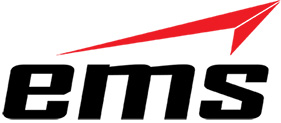 If you like to keep up with technological innovation, you’ll definitely be interested in hearing about the newest developments made at M7 Aerospace. This company is utilizing handheld scanning tech that is a real breakthrough for the industry and may even change how data is collected in the future.
If you like to keep up with technological innovation, you’ll definitely be interested in hearing about the newest developments made at M7 Aerospace. This company is utilizing handheld scanning tech that is a real breakthrough for the industry and may even change how data is collected in the future.
It’s really tough when an aircraft that’s over 30 years old needs repairs. Not only because the tech is outdated but mostly because the original plans can be difficult to get your hands on. To combat this problem and make effective repairs, M7 Aerospace, a Texas-based company, decided to use 3D scanning to get the job done.
But this was not without its problems. You see, traditional scanning methods involve placing objects on jigs or tripods. Then a scanner is used around the object to capture the details. This limits what items can be scanned. Nothing as big as an aircraft would fit the bill. However, a handheld 3D scanning device does make this possible. In particular, the company used the ZScanner 700 PX to capture data about their aircrafts. This handheld scanner makes it super easy to capture every little detail about aircraft without complicated setups. You can get in all the nooks and crannies without even really trying and get super professional results to show for it.
The device features AICON photogrammetric software that gives each scan an incredible amount of accuracy. Combine that with the portability and it’s quite something. Large surfaces are no longer the problem they once were with this 3D scanning innovation.
This technology is perfect for reverse engineering. For instance, M7 was able to use it to  scan the Fairchild Metroliner with a 0.1 mm resolution in three days. That’s it! For context’s sake the Fairchild Metroliner is a turboprop aircraft with a 57-foot wingspan and seats 19! That’s pretty impressive. Multiple scans were taken then automatically combined together using the ZScanner software.
scan the Fairchild Metroliner with a 0.1 mm resolution in three days. That’s it! For context’s sake the Fairchild Metroliner is a turboprop aircraft with a 57-foot wingspan and seats 19! That’s pretty impressive. Multiple scans were taken then automatically combined together using the ZScanner software.
Once the scan was done, the data was imported in CATIA CAD software, allowing M7 to use the information they had collected to create modifications and to ensure repairs and parts met the exact specifications of the model. All in all, 3D scanning offers a much easier way to compile data about a large object, consolidate it, and develop a plan for making repairs, manufacturing new parts for it, etc. It will be exciting to see where technology like the ZScanner takes us next.
Picture credit: 3D Systems
Source: https://www.zcorp.com/en/Company/Customers/Case-Studies/M7-Aerospace/spage.aspx

